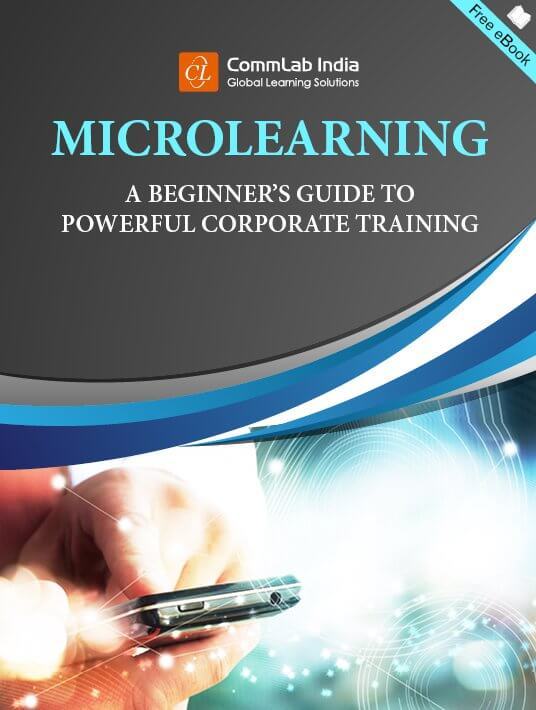What Is Fundamental To A Microlearning Strategy?
Think about where you get most of your knowledge nowadays. Most likely, it would be from something short and snappy –a poster or a video– you saw on the internet, rather than from reading a book or even a paper. This, in a nutshell, is what microlearning is; bytes of information provided in an engaging and interactive way.

This is what is happening with corporate training as well. Tedious classroom training sessions, lengthy employee manuals, and standalone eLearning courses are quickly being supplemented by the learning method of today’s millennial generation i.e., microlearning.
Microlearning refers to presenting learning in short nuggets of 3-5 minutes long (or even shorter), with a specific focus and to meet a specific learning objective.
It can be used for both formal and informal training, with the aim of improving employee performance. No matter what form of training microlearning is used to facilitate, one fundamental holds true every time. A single microlearning module cannot be used to convey a complete lesson.
However, several such modules (with each one undertaking a specific learning point), can be successfully used as supporting pillars for a full-fledged eLearning course. Below are some of the ways through which microlearning modules are best suited to be part of a bigger, full-fledged e-course:
1. Gamified Learning
Microlearning nuggets can be used as gamified, scenario-based learning, developed ideally for the mobile app format, to supplement the larger eLearning course. Learners will be required to make necessary choices as per the scenario to advance through the course.
The gamified approach not only makes the learning process fun; it also gives learners a practical application of their knowledge from the main course. This reinforces concepts and results in better knowledge retention. The gamified scenario is tailor-made to suit organizational goals.
2. Short Videos
Videos are a godsend for microlearning modules. Videos use high-impact, organization/topic-specific visuals to reinforce ideas conveyed in the larger eLearning course. Use videos to depict situations to help users connect with their learning better. Video-based scenarios combine the interactivity and power of two very strong learning mediums, creating a lasting impression in the minds of learners.
Microlearning nuggets can also be packaged as interactive videos. Learners can pause or playback a video as required, to get a better grasp of the subject matter. You can even use simple whiteboard animation videos to break up difficult or boring concepts from the larger eLearning course.
3. Interactive PDFs/eBooks
Nothing is more irritating than going through a lengthy document on the small screen size of your smartphone. A microlearning module that uses an interactive PDF or eBook saves you the headache of reading extensive documents on your phone or tablet. Interactive PDFs or eBooks have information from the larger eLearning course packaged in small bits.
Combine that with user-friendly navigation and appealing visuals – they act as an integral addition to the main learning program. Make eBooks multi-document compatible to ensure that all your learners get the same flawless experience across all their devices. Interactive PDFs can also be used to deliver performance support by presenting quick tips, checklists, and fact sheets.
4. Infographics
Using infographics as microlearning assets is ideal for catering to short attention spans and offering quick reference materials. Infographics convey the essence of the larger eLearning course that learners might have just undertaken. It distills the main points from the course and presents it in a visually attractive manner. The minimal use of text and appealing visuals helps the learner digest information quickly to effectively reinforce the larger chunk of information they just witnessed.
Infographic microlearning modules greatly increase the value of the main course by covering all the key points once more in a single glance. Owing to its attractive packaging, learners never shy away from viewing an infographic.
Microlearning is indeed the future of learning. Modern learners are hard pressed for time and their attention span is short. They want bite-sized information that is focused, and can be absorbed on the go, at any point of time, on any device. To achieve this desired result, microlearning must be efficient and engaging.
The design has to be visually appealing and the content precise, leading to the rapid attainment of expected learning outcomes. However, it should be remembered that microlearning is not a substitute for traditional online training, rather a complementary part of a larger learning program.
Related Articles:
- Free eBook: Microlearning - A Beginner's Guide To Powerful Corporate Training
- What Is Microlearning And What Are The Most Important Microlearning Features?









